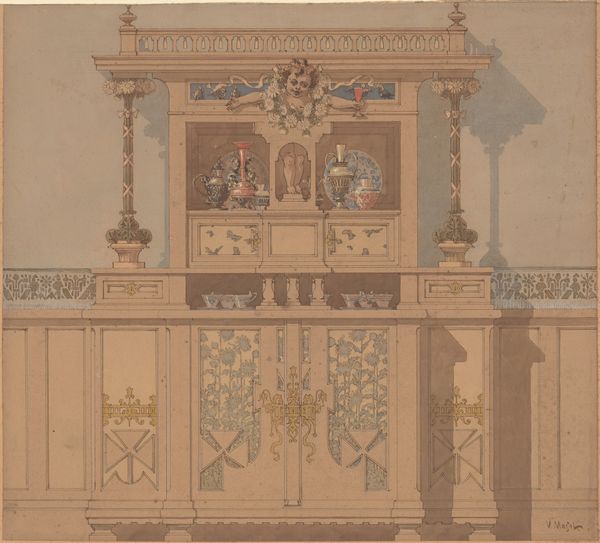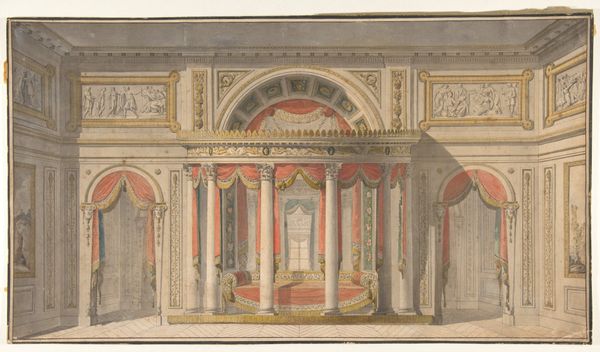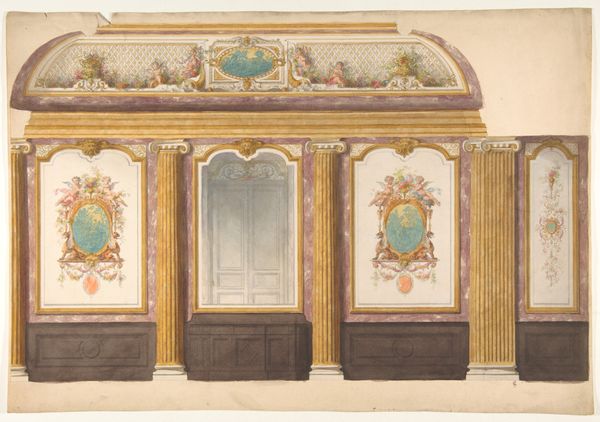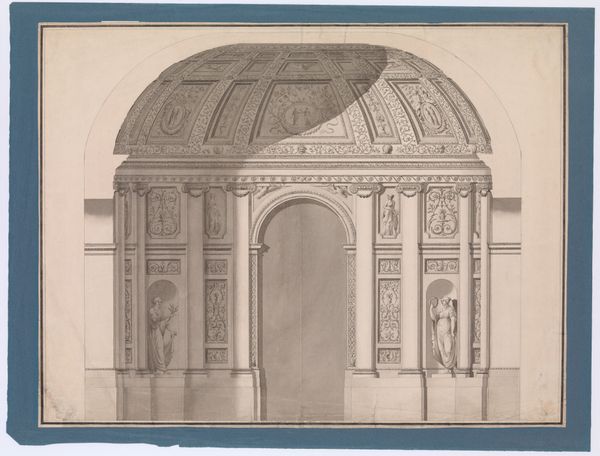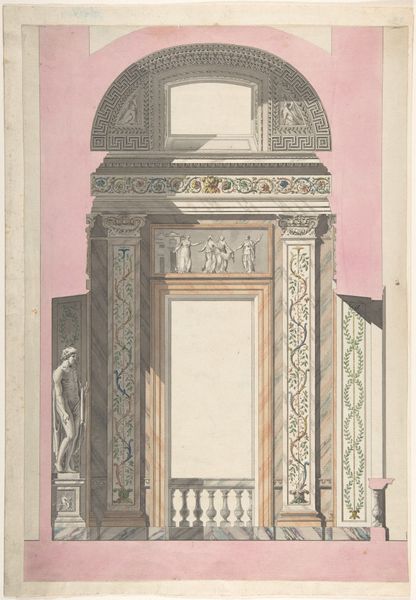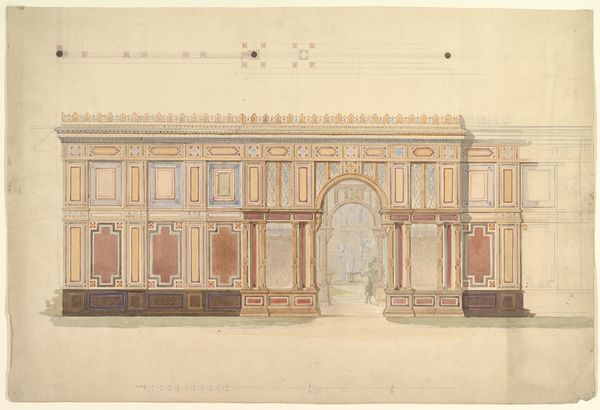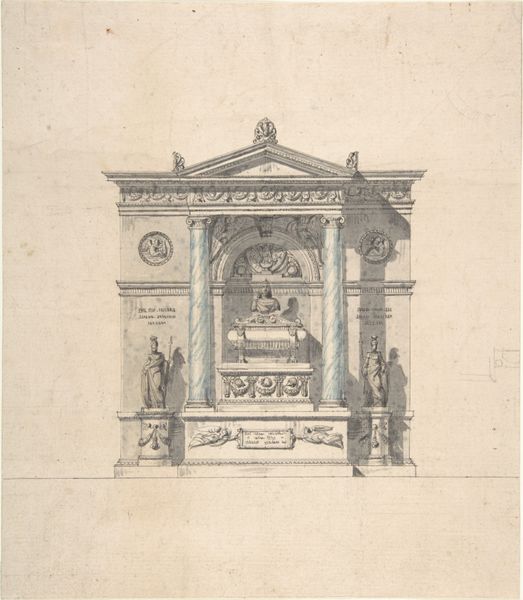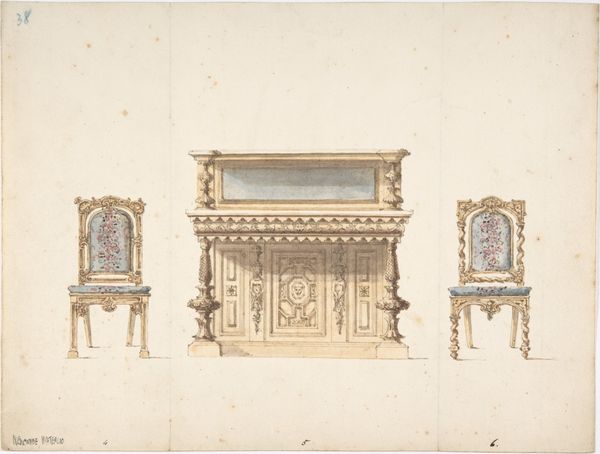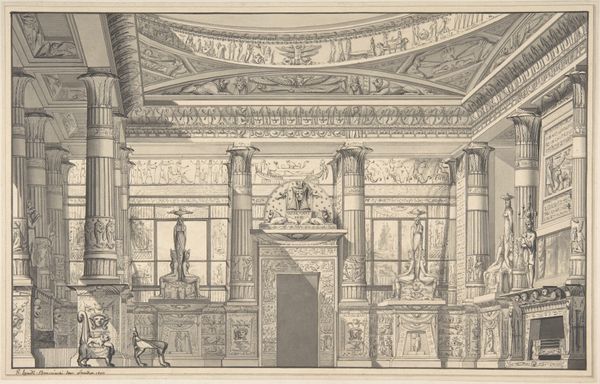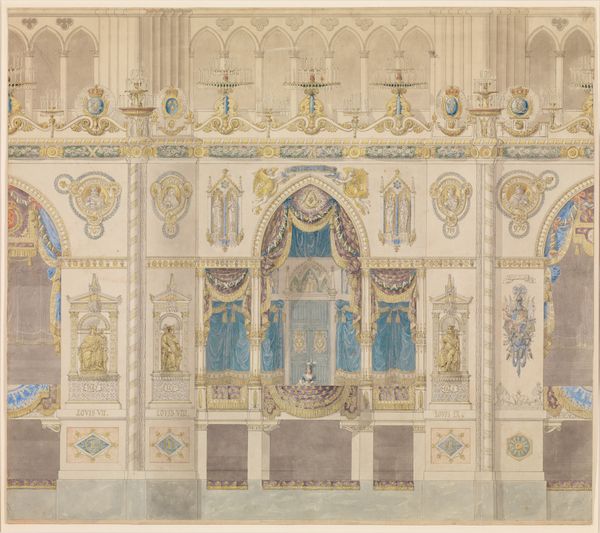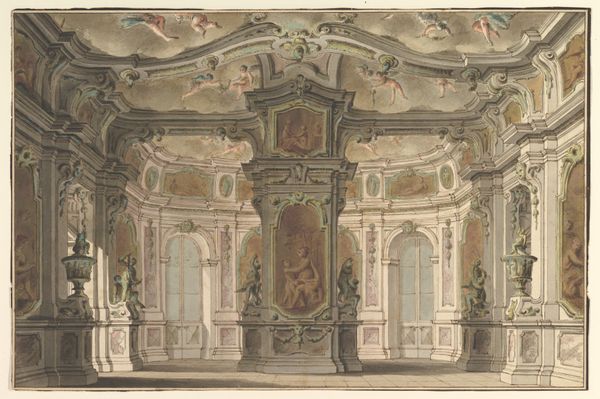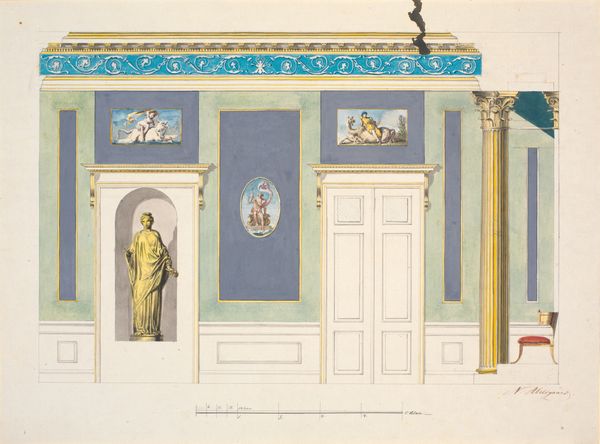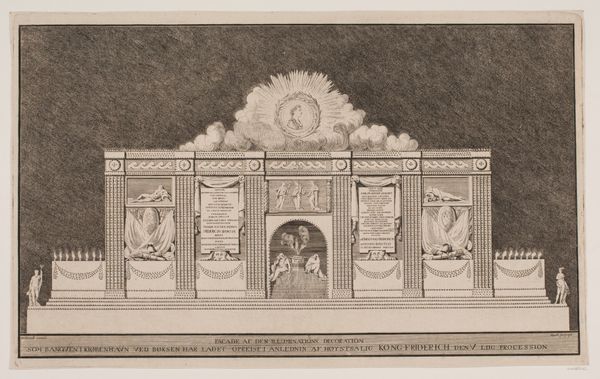
drawing, tempera, print, architecture
#
drawing
#
neoclacissism
#
tempera
# print
#
classical-realism
#
traditional architecture
#
arch
#
architecture
Dimensions: 9 3/8 x 11 1/4 in. (23.8 x 28.6 cm)
Copyright: Public Domain
Curator: Here we have an intriguing watercolor and tempera drawing called "Study for an Arched Alcove with a Canapé." The artist is anonymous, and it dates from sometime between 1799 and 1815. It beautifully exemplifies Neoclassical design principles. Editor: Wow, this room gives me such a serene feeling! The colors are so soft, and there’s a dreamlike quality to the light…it's as if the scene is waiting for someone to gently awaken within it. Curator: I see that. There’s a deliberate structural rigor that underpins the composition—the symmetry of the alcove, the framing by the columns, even the placement of the figures feels carefully calibrated. It's very formal. Editor: Precisely! But formal doesn't always mean cold. Think of it as a kind of emotional regulation through order. Those dancing figures...they seem restrained and liberated simultaneously. It's a captivating paradox. What catches your eye most? Curator: The interplay of interior space and the classical motifs—the swags, rosettes, and the mythological figures contained in circular medallions. They seem less about individual narrative and more about creating a mood, a harmony of form. Editor: Ah, yes, harmony...it is almost musical. And have you noticed the repeated vertical elements - columns, drapes? I feel it suggests layers between a performative self and a true inner being. Is that too romantic? Curator: Perhaps. What strikes me most is that, while it appears complete, it remains a study. An idea still unfolding. The medium, mixing printmaking with drawing, enhances the precision, almost an analytical eye… Editor: It feels intimate despite its grand scale. It whispers rather than shouts. Ultimately, it reminds us that sometimes the most profound art is born from the quiet contemplation of interior worlds. Curator: I appreciate that view. Looking closely reveals nuances of light, form and texture and a desire to translate a classical concept.
Comments
No comments
Be the first to comment and join the conversation on the ultimate creative platform.
